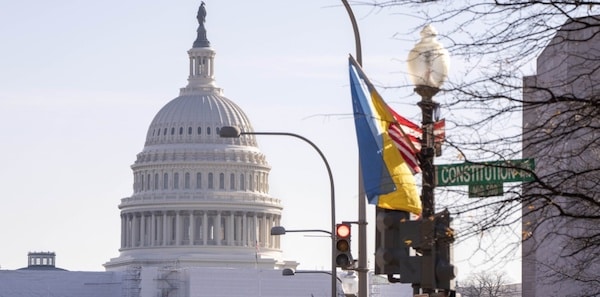PRESIDENT Volodymyr Zelensky is away from Ukraine for the first time since his country’s long simmering civil war became a full-blown international conflict.
Zelensky has gone off to Washington, via Poland, to confer with President Joe Biden and likely try to repair relations with his principal sponsor.
Earlier this year U.S. media reported that a call between the two presidents ended on a sharp note with Biden, who had just told Zelensky that another $1 billion in military assistance was on the way, raising his voice when Zelensky presented a new list of demands.
Biden reportedly told the Ukrainian to show a bit more gratitude.
NBC News said the clash reflected “Biden’s early awareness that both congressional and public support for sending billions of dollars to Ukraine could begin to fade.”
On the eve of his visit Zelensky tweeted that his purpose was to strengthen resistance and defence capabilities.
Before he departed he visited Bakhmut, close to the front line where Ukrainian fighters are coming under intense pressure from the Russians.
As winter begins in the contested region, new anxieties are beginning to take hold in both Ukraine and the U.S. that the kind of military victory which might see Russian forces expelled from Ukrainian territory–commonplace in uncritical Western reporting earlier this autumn–looks increasingly unlikely.
The Economist interviewed Ukraine’s armed forces boss General Valery Zaluzhny and reported that while his wish list included 1,000 tanks and infantry fighting vehicles, he expressed some doubts that Ukraine would be able to resist Russia’s improved military dispositions.
And now an admission from former German chancellor Angela Merkel’s has cast a new light on Western intentions.
In an interview with Die Zeit earlier this month she said that “the 2014 Minsk Agreement was an attempt to buy time for Ukraine. Ukraine used this time to become stronger, as you can see today. Ukraine in 2014-2015 and Ukraine today are not the same.”
In the intervening period much hope was invested in reviving the Minsk agreements–that they would have ended hostilities, retained the disputed regions within Ukraine’s borders and gifted Ukraine a federal constitution that would give autonomy to the Lugansk and Donetsk regions. Instead we have war and growing fears.
In the U.S. Democrats and Republicans are level-pegged, with concerns that U.S. and Nato support for Ukraine might lead to a U.S. war with Russia.
A third of Democrats and roughly the same share of Republicans (31 per cent) were either “extremely” or “very concerned” about this.
With massive anti-Nato demonstrations in Prague and Paris and, in Germany, weekly protests against sanctions the opposition to Nato’s proxy war is gaining ground.
Our poisoned media present the global confrontation between the Western bloc and Russia and China in Manichean terms as between good and evil but the attempt to present “the international community” as unified is not supported by the facts.
An academic analysis last week found that among the 6.3 billion people living across continental Eurasia, the Middle East and the west of Africa, 70 per cent feel positively towards China and two-thirds towards Russia, while China has pipped the U.S. at the popularity post with 62 per cent.
But war is not an opinion poll and thousands face flight, death and destruction.
As a military resolution of the conflict appears impossible and the continuation of war unthinkable the urgent need is for measures which might end the conflict.
This cannot lie in ramped up arms exports which benefit only the arms companies, but in negotiations.
Our immediate concern is why is Labour not the peace party in Parliament?

